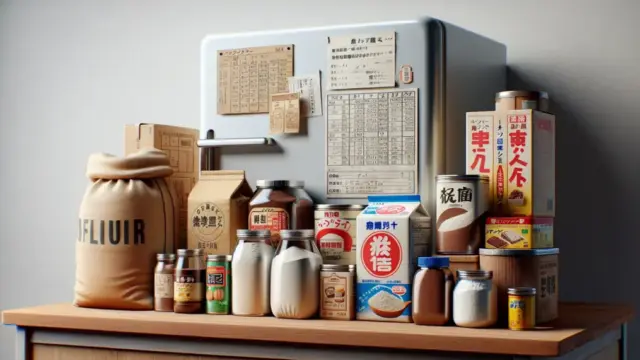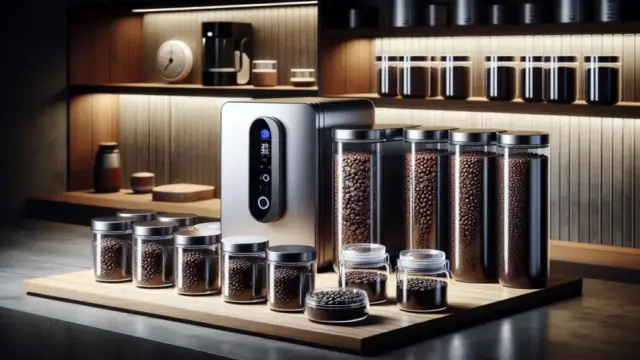Are you ready to take your first step into the delightful world of coffee? Understanding the different types of coffee beans and their unique characteristics can help you find the perfect bean to elevate your daily coffee routine into something truly special. In this article, we’ll explore how to choose coffee beans, the best ways to store them, and how the roasting process impacts flavor. Be sure to read through to the end for tips that will enrich your coffee experience!
Selecting coffee beans that align with your lifestyle and preferences can completely transform your coffee’s flavor profile. As you read through this article, think about the taste sensations you enjoy; you might just stumble upon some new favorites. Let’s discover some recommended coffee beans together and enhance your daily brew!
- In-depth breakdown of coffee bean varieties and their characteristics
- Tips for choosing the coffee beans that suit you best
- Secrets for storing coffee beans to maintain freshness
Understanding the Types and Characteristics of Coffee Beans
Coffee is a beloved beverage enjoyed around the world, and one of its greatest charms lies in the diverse flavors that vary by bean type and origin. Among the many varieties, Arabica and Robusta are the two primary coffee beans, each with distinct characteristics that cater to different preferences. Additionally, the origin of the beans significantly influences their flavor, making the choice of which beans to select crucial for enhancing your coffee experience. In this section, we’ll take a closer look at the differences between Arabica and Robusta, as well as how the origin of the beans can impact their flavor profile.
The Differences Between Arabica and Robusta
Arabica beans are generally regarded as high-quality, boasting a harmonious balance of sweetness and acidity. These beans thrive in high-altitude regions, making them sensitive to environmental conditions and requiring more care during cultivation. Consequently, they tend to be on the pricier side. In contrast, Robusta beans are characterized by their strong bitterness and higher caffeine content. They are easier to grow, which results in a more affordable price point. Understanding the unique features of each type of bean can help you discover the coffee that best suits your taste.
Flavor Variation by Bean Origin
The flavor profile of coffee beans varies greatly depending on their origin. For instance, beans from Ethiopia are known for their fruity and floral aromas, while Colombian beans offer a nutty sweetness reminiscent of caramel. Brazilian beans, on the other hand, are distinguished by their chocolate-like flavor and rich body. By being mindful of the bean’s origin, you can further refine your search for your perfect cup of coffee.
- Arabica beans have a great balance of sweetness and acidity.
- Robusta beans are strong in bitterness and have a higher caffeine content.
- The flavor varies by origin, helping you find your personal favorite.
How to Choose the Right Coffee Beans for You
When selecting coffee beans, what do you pay attention to? Choosing beans that align with your lifestyle and taste preferences can make your daily coffee ritual even more special. In this section, we’ll discuss how to select beans based on your lifestyle and reflect your personal taste. Enjoy the process of finding your perfect cup of coffee!
Choosing Based on Your Lifestyle
Everyone has their own unique coffee-drinking habits. Some might need a quick brew to kickstart a busy morning, while others might prefer to savor their coffee during a leisurely afternoon. And then there are those who love sharing coffee experiences with friends. For busy individuals, a simple drip coffee maker can be a lifesaver. On the other hand, if you have a bit more time on your hands, experimenting with a French press or espresso machine can lead to a delightful coffee adventure.
Reflecting Your Taste Preferences
The flavor of coffee can vary significantly based on the type of beans and their roast levels. If you’re seeking sweetness, Arabica beans are a great choice, while those who enjoy a more bitter profile might prefer Robusta beans. Additionally, roast level plays a crucial role. Light roasts offer fruity acidity, whereas dark roasts deliver rich, bold flavors with a pronounced bitterness. The best way to discover your favorite taste is to experiment with a variety of beans.

If you found this article interesting, we recommend checking out this article on “A Complete Guide to Brewing Delicious Drip Coffee for Beginners.” This guide provides detailed information on brewing techniques and selecting the right beans to ensure a perfect cup every time!
- Choose a coffee style that fits your lifestyle
- Understand the types of beans and roast levels that suit your taste
- Experiment with different coffees to discover your flavor preferences
The Impact of Roast Level on Coffee
One of the key factors that determine the flavor and aroma of coffee is its roast level. The roast level refers to how deeply the coffee beans have been roasted, categorized into light, medium, and dark roasts. Each roast level has its own characteristics and significantly influences the taste and scent of the coffee. In this section, we will explore how different roast levels affect coffee, helping you find the one that suits your preferences.
Characteristics of Light, Medium, and Dark Roasts
Light roasts are known for their bright color and a flavor profile that emphasizes fruity notes and acidity. This roast level allows for the natural flavors of the beans to shine through, making it particularly popular among specialty coffee enthusiasts. Medium roasts offer a well-balanced taste, harmonizing sweetness with acidity, and are generally favored by the majority of coffee drinkers. On the other hand, dark roasts are characterized by a stronger bitterness and a rich body, often featuring flavors reminiscent of chocolate or nuts. They provide a bold drinking experience and pair well with milk, making them a common choice for lattes and cappuccinos.
How Roast Level Affects Aroma
Changes in roast level also lead to significant variations in coffee aroma. Light roast beans emit floral and fruity scents, and taking a sip reveals a refreshing acidity. Medium roasts present a balanced aroma, with notes of sweetness and toastiness. As the roast moves to dark, the aroma becomes more pronounced, featuring toasted or burnt scents alongside hints of chocolate. Choosing a roast level that aligns with your preferences or mood can elevate your coffee experience even further.
- Light roasts are fruity with high acidity
- Medium roasts are well-balanced, harmonizing sweetness and acidity
- Dark roasts offer strong bitterness, richness, and delightful chocolate notes
How to Store Coffee Beans and Tips for Maintaining Freshness
To truly enjoy a delicious cup of coffee, keeping your coffee beans fresh is essential. The fresher the beans, the richer the aroma and flavor. However, many may wonder about the best ways to store these precious beans. In this section, we’ll dive into the ideal storage conditions and management tips after purchasing coffee beans. Use this guide to enhance your coffee experience!
Ideal Storage Conditions
The environment in which you store your coffee beans plays a crucial role in maintaining their freshness. First and foremost, always keep them in a cool place away from direct sunlight. Exposure to light can lead to quicker deterioration. Humidity is another enemy, so it’s best to avoid storing beans in damp areas. Using an airtight container is a great way to limit exposure to air and preserve those delightful aromas and flavors. Glass jars or vacuum-sealed bags are highly recommended.
Management Tips After Purchase
Proper management of your coffee beans after purchase is equally important. Aim to use them up as quickly as possible once opened. Beans exposed to air and moisture will gradually lose their quality. To maintain the aroma, consider grinding only what you need for each brew. If you buy in bulk, freezing is a viable option. Just remember to seal them tightly before freezing. When you’re ready to use them, take the beans out of the freezer and allow them to come to room temperature before grinding.
- Store coffee beans in a cool place, away from direct sunlight.
- Use airtight containers to protect against air and moisture.
- Use opened beans quickly, and only grind what you need for each brew.
Conclusion
We’ve explored how to choose and store coffee beans, but the most important takeaway is finding the coffee that suits you best. By understanding the different types of beans, like Arabica and Robusta, as well as the roasting levels—light, medium, and dark—you can discover the perfect brew for your taste buds. Additionally, maintaining the freshness of your coffee beans requires the right storage conditions and management practices. Keeping these factors in mind will elevate your daily coffee ritual into something truly special.
So, based on what you’ve learned, take the plunge and pick out some recommended coffee beans. Enjoying new flavors will undoubtedly enrich your coffee experience.
- It’s essential to choose the right type of coffee beans and roasting level that match your preferences.
- Coffee beans should be stored in appropriate conditions to maintain their freshness.
- Understanding the characteristics of the beans can lead to a more fulfilling coffee experience.
Try out some new coffee beans and discover your ideal cup! And we’d love to hear what kinds of coffee you enjoy, so feel free to share your favorites in the comments!














































Comment